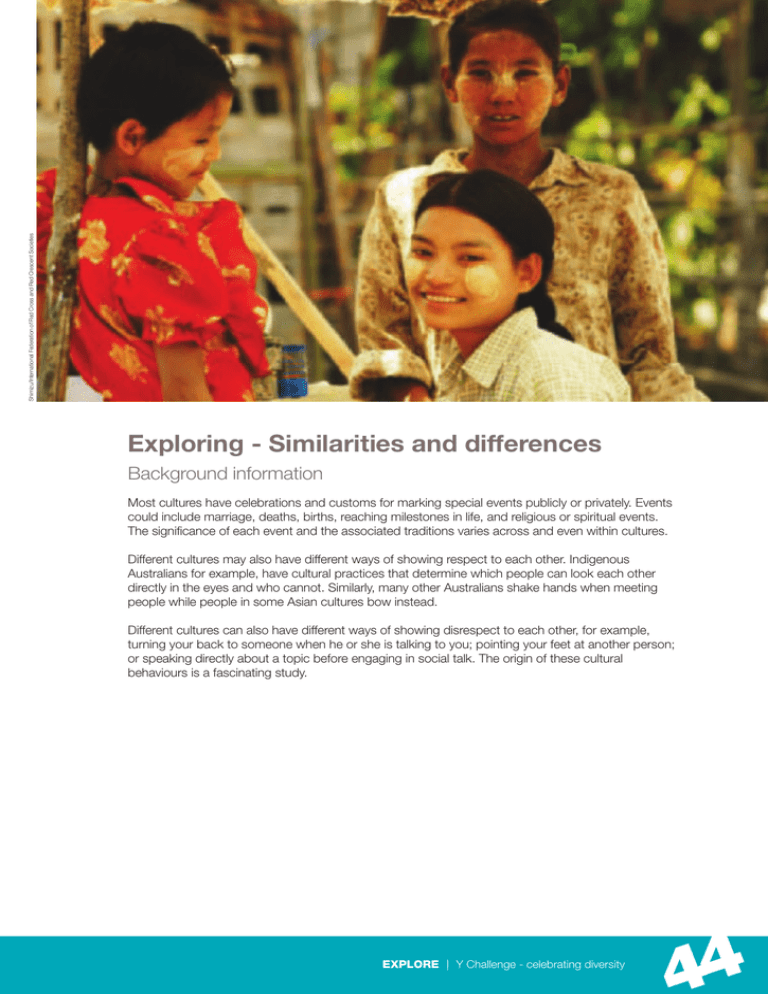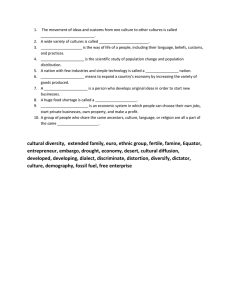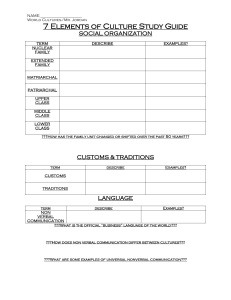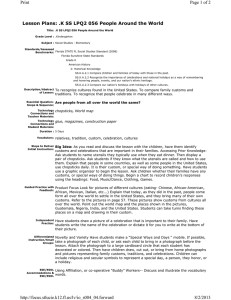Exploring - Similarities and differences
advertisement

Shimizu/International Federation of Red Cross and Red Crescent Societies Exploring - Similarities and differences Background information Most cultures have celebrations and customs for marking special events publicly or privately. Events could include marriage, deaths, births, reaching milestones in life, and religious or spiritual events. The significance of each event and the associated traditions varies across and even within cultures. Different cultures may also have different ways of showing respect to each other. Indigenous Australians for example, have cultural practices that determine which people can look each other directly in the eyes and who cannot. Similarly, many other Australians shake hands when meeting people while people in some Asian cultures bow instead. Different cultures can also have different ways of showing disrespect to each other, for example, turning your back to someone when he or she is talking to you; pointing your feet at another person; or speaking directly about a topic before engaging in social talk. The origin of these cultural behaviours is a fascinating study. EXPLORE | Y Challenge - celebrating diversity 4 ACTIVITY 1.19 Cultural objects and customs Focusing on similarities and differences may be confronting for some young people as they are often striving to be the same as their peers. Activities 1.21 and 1.22 do not focus on individuals but provide opportunities to discuss similarities and differences between cultures. This activity through an examination of objects and practices, affirms the richness that cultural diversity brings to Australian society. • Have each member of the team either: - bring in an object (or photograph of an object) that is significant to them as a personal symbol of their culture. Examples might be a musical instrument, traditional jewellery or clothing, a household ornament or a piece of sporting equipment OR - describe a custom their family observes such as sharing a meal together on Friday night or Sunday lunch, fasting for Ramadan, not wearing shoes in the house or attending the AFL grand final. • Each person describes what their object or custom is, its cultural significance and its importance to their family. • Discuss how different cultural groups can be similar in that they have objects and customs that are significant, even though there are differences in the kind of objects and their significance. You will need • objects (or photographs of objects) of personal and cultural significance • descriptions of cultural practices OPTIONAL • printed material eg magazines, brochures • digital camera • poster paper • scissors, glues, pens • computers • large map of the world In what ways are various cultural celebrations similar – for example birthdays? Do they bring the family together, show respect to a divine being or celebrate the individual? In what ways are various cultural celebrations different – for example birthdays? What are the advantages and disadvantages of being similar to someone else? What are the advantages and disadvantages of being different from someone else? Can we assume that people who have the same cultural practices necessarily have the same outlook and interests? What are the things some different cultures have in common? Stories about the object or custom can be elaborated. Was the object a gift, an heirloom, where did it come from? Were there any humorous aspects associated with a custom? Avoid entering into debate about either religious objects or practices. Simply recognise that religion is one aspect of many people’s culture. Ensure all objects are kept safe while they are being used in this activity and that all contributions to discussion are respectful. 5 EXPLORE | Y Challenge - celebrating diversity www.morguefile.com Each person could create a poster that tells the story of their object or custom. The team could create a web page or a display of the objects; drawings or photographs of the customs could be placed around a map of the world.





